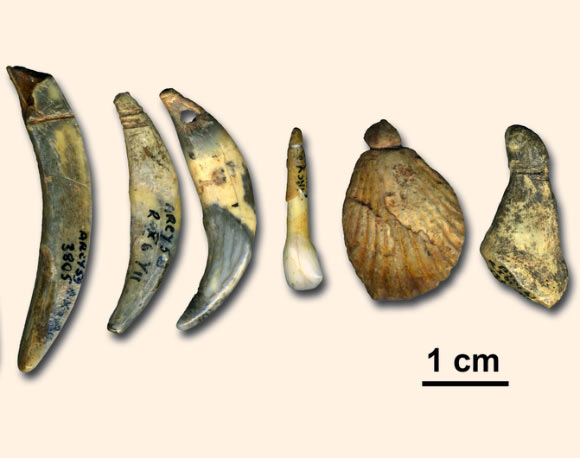An international team of researchers led by the Max Planck Institute for Evolutionary Anthropology in Germany has demonstrated that Neanderthals were responsible for the Châtelperronian, a transitional industry from central and southwestern France and northern Spain.

Neanderthal man. Image credit: Mauro Cutrona.
“The so-called ‘transitional industries’ are a key for understanding the replacement process of Neanderthals by modern humans in western Eurasia at the beginning of the Upper Paleolithic between 50,000 and 40,000 years ago,” the scientists said.
“While in Europe the older Mousterian industry of the Middle Paleolithic can be clearly attributed to Neanderthals and the later Upper Paleolithic assemblages to modern humans, the nature of the makers of the Châtelperronian industry has long been disputed.”
“Châtelperronian assemblages from the Grotte du Renne and Saint Césaire archaeological sites in France have yielded well-identified Neanderthal remains,” they said.
“However at the Grotte du Renne, Châtelperronian layers also produced rather sophisticated bone tools and body ornaments.”
“Despite this fossil evidence, the question of whether Neanderthals could manufacture such sophisticated objects is the topic of intense debate.”

Châtelperronian artifacts from the Grotte du Renne. Image credit: Marian Vanheren.
However, using peptide mass fingerprinting for rapid, low-cost detection of hominin remains, the team identified 28 additional hominin specimens among previously unidentifiable bone fragments at the Grotte du Renne.
It is thought the bone fragments most likely represent the remains of a single, immature, breastfed individual, with radiocarbon dating being fully consistent with its direct association to Neanderthal ancestry.
“For the first time, this research demonstrates the effectiveness of recent developments in ancient protein amino acid analysis and radiocarbon dating to discriminate between Late Pleistocene clades,” said co-author Prof. Matthew Collins, from the University of York.
“To identify proteins related to specific developmental stages of bone formation highlights one of the main strengths of this new analysis, especially in a multi-disciplinary context.”
“These methods open up new avenues of research throughout Late Pleistocene contexts in which hominin remains are scarce and where the biological nature of remains is unclear due to ancient DNA not being preserved,” he said.
“This represents a significant advance in palaeoproteomic phylogenetics and is of direct relevance to our understanding of hominin evolution.”
“To differentiate between modern humans, Neanderthals and Denisovans on the basis of ancient protein research provide really exciting opportunities for future research into the origins of our and their evolutionary history,” said lead author Frido Welker, PhD student at the Max Planck Institute for Evolutionary Anthropology.
“The process of replacement of archaic local populations by modern humans in Eurasia is still poorly understood, as the makers of many palaeolithic tool-kits of this time period remain unknown,” said co-author Prof. Jean-Jacques Hublin, Director of the Department of Human Evolution at the Max Planck Institute for Evolutionary Anthropology.
“This type of research now allows us to extract unrecognisable human fragments out of large archaeological assemblages and to revisit the mode and the tempo of this major event in human evolution with fresh material.”
The research is published in the Proceedings of the National Academy of Sciences.
_____
Frido Welker et al. Palaeoproteomic evidence identifies archaic hominins associated with the Châtelperronian at the Grotte du Renne. PNAS, published online September 16, 2016; doi: 10.1073/pnas.1605834113







